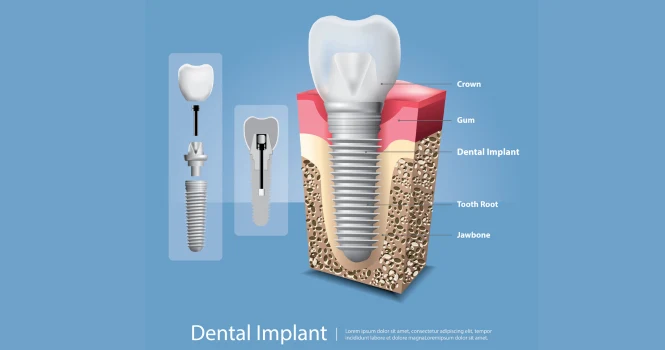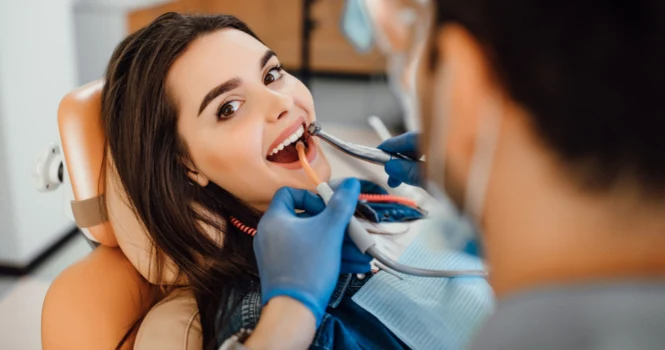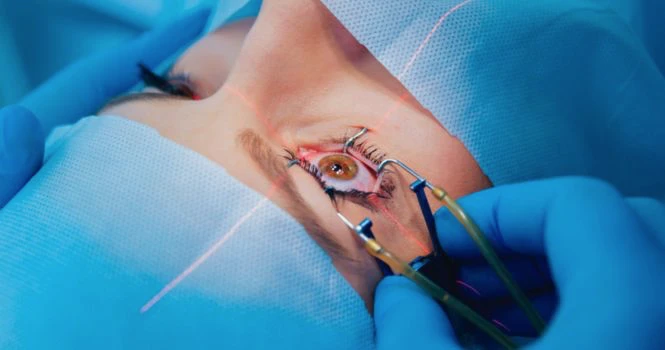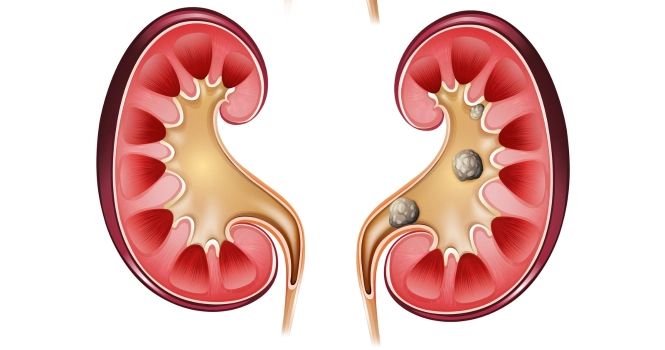Navigating the world of dental care can often seem overwhelming, especially with the myriad of procedures and treatments available today. Whether you’re looking to improve the appearance of your smile, address specific oral health issues, or understand how best to maintain your child’s dental well-being, it’s crucial to be informed.
This article is an all-encompassing guide designed to demystify the various aspects of contemporary dentistry.
From preventative and restorative treatments to cosmetic enhancements and surgical interventions, this article offers a detailed look at the different dental procedures.
Preventative Dental Procedures
Preventative dental procedures play a crucial role in maintaining oral health and reducing the risk of developing dental issues like cavities, gum disease, and even oral cancer.
Among these preventative measures, routine cleanings, dental X-rays, fluoride treatments, and sealants are some of the most commonly employed techniques.
Routine Cleanings
Routine dental cleanings are often the first line of defense in preventative oral care. Generally recommended every six months, these cleanings involve a thorough examination and cleaning of your teeth and gums by a dental hygienist.
The process begins with the removal of plaque and tartar, which are key contributors to cavities and gum disease. Specialized tools, such as scalers, are used to scrape away these accumulations from the tooth surface and below the gumline.
Following this, teeth are polished using a gritty prophylactic paste, which not only brightens the teeth but also creates a surface less likely to attract plaque. Routine cleanings are also an opportune time for dental professionals to assess your overall oral health, potentially catching early signs of more serious issues that may require intervention.
Dental X-rays
Dental X-rays are a diagnostic tool that enables dentists to view structures not visible to the naked eye, such as the areas between teeth, the jawbone, and even the roots beneath the gums.
By taking these images, dentists can identify early signs of cavities, gum disease, and other oral health concerns that may not yet be causing symptoms. X-rays are generally taken once a year as part of your preventative care, although the frequency may vary depending on your oral health status.
Advances in technology have made this process quicker and safer, with digital X-rays emitting significantly less radiation compared to their older counterparts.
Fluoride Treatments
Fluoride is a mineral that is effective in preventing tooth decay and can even reverse early decay. During a fluoride treatment, a concentrated form of fluoride is applied directly to the teeth.
This is usually done in the form of a gel, foam, or varnish. The treatment takes just a few minutes and is generally administered during a routine cleaning session.
For those particularly prone to cavities, especially children and teens, or those with certain medical conditions that put them at higher risk, fluoride treatments can be an essential part of preventative care.
It strengthens the enamel, making it more resistant to acid attacks from plaque bacteria, thus reducing the risk of cavities.
Sealants
Dental sealants are another preventative measure targeted primarily at children, although adults can also benefit from them.
They involve the application of a plastic coating to the chewing surfaces of the back teeth (molars and premolars) where decay most often occurs. The sealant quickly bonds to the grooves and depressions in the teeth, forming a protective shield over the enamel.
This is especially beneficial for children who are still perfecting their brushing techniques and may miss these hard-to-reach areas. Sealants can be applied quickly and painlessly and can effectively protect teeth for many years before needing to be reapplied.
Restorative Dental Procedures
Restorative dental procedures are aimed at repairing or replacing damaged or missing teeth, restoring both function and aesthetics to the mouth. This category of dental work includes a range of treatments, such as fillings, crowns, bridges, root canals, and implants.
These procedures not only improve the appearance of your smile but also contribute to overall oral health by alleviating discomfort and preventing further damage or disease.
Fillings
Dental fillings are perhaps the most common form of restorative dental work, mainly used to treat tooth decay or minor fractures.
When a tooth has a cavity, the dentist will remove the decayed portion of the tooth and fill the empty area with dental filling material. There are various types of filling materials available, including amalgam, composite resin, and porcelain, each with its own set of pros and cons.
Amalgam fillings are known for their durability but are less aesthetically pleasing, while composite resin fillings blend in more naturally with the tooth color. The primary aim of a dental filling is to restore the tooth’s integrity and prevent further decay.
Crowns
A dental crown is a cap that covers a damaged or decayed tooth to restore its original size, shape, and function. Crowns are used in cases where the tooth structure has been compromised to the extent that fillings are not sufficient to restore its integrity.
Made from materials like porcelain, metal, or a combination of both, crowns are customized to fit over the existing tooth and are cemented into place. They are especially useful for protecting weakened teeth, covering dental implants, or improving the appearance of discolored or misshapen teeth.
Bridges
Dental bridges are used to replace one or more missing teeth, effectively “bridging” the gap where teeth are absent. A bridge usually consists of two crowns that anchor onto the natural teeth or implants surrounding the gap, and artificial teeth that fill in the empty space.
Like crowns, bridges can be made from a variety of materials, including porcelain and metals. The use of a bridge not only restores the appearance of a complete smile but also distributes the forces in your bite, aiding in chewing and speaking functions.
Root Canals
A root canal is a procedure aimed at treating infection or damage in the tooth’s pulp, which is the innermost soft tissue containing nerves and blood vessels.
During a root canal, the dentist removes the infected or damaged pulp, cleans and disinfects the canal, and then fills and seals it.
This treatment effectively preserves the existing tooth structure and avoids extraction. Contrary to popular belief, modern root canals are relatively painless due to advancements in anesthesia and can be completed in one or two visits.
Implants
Dental implants are a long-term solution for replacing missing teeth and are often considered the gold standard in restorative dentistry.

An implant consists of a titanium post that is surgically inserted into the jawbone, acting as a substitute for the root of a missing tooth. Once the implant has fused with the bone, a crown is attached to it, resulting in a tooth that looks and functions much like a natural one.
Dental implants are noted for their durability, stability, and natural appearance, but they require good oral hygiene and regular dental visits to maintain.

In summary, restorative dental procedures like fillings, crowns, bridges, root canals, and implants serve various purposes, from treating decay and restoring function to replacing missing teeth and improving aesthetics.
Each of these treatments plays a critical role in enhancing oral health, and advancements in dental technology have made these procedures more effective and comfortable for patients than ever before.
Cosmetic Dental Procedures
Cosmetic dental procedures focus on improving the appearance of your teeth, gums, and overall smile. While some of these treatments offer restorative benefits, their primary goal is aesthetic enhancement.
From teeth whitening and veneers to bonding and orthodontic treatments, cosmetic dentistry offers a variety of options for those looking to boost their smile’s appeal.
Teeth Whitening
One of the most popular and accessible cosmetic dental procedures is teeth whitening. Over time, teeth can become stained or discolored due to various factors like aging, consumption of certain foods and beverages, and tobacco use.
Teeth whitening involves the application of bleaching agents, most commonly hydrogen peroxide, to lighten the teeth by several shades. The procedure can be performed in a dental office for immediate results or at home using custom-made trays and gel provided by the dentist.
While there are over-the-counter whitening products available, professional whitening under dental supervision is generally safer and more effective. It is worth noting that not everyone is a suitable candidate for teeth whitening, especially those with dental restorations or extreme tooth sensitivity.
Veneers
Dental veneers are thin shells of porcelain or composite resin that are custom-fabricated to fit over the front surface of a tooth. They are commonly used to correct issues such as discoloration, chipped or broken teeth, gaps, and even minor misalignments.
The process of getting veneers typically involves the removal of a small amount of the tooth’s enamel to allow for a natural fit. Once the veneers are ready, they are cemented onto the teeth using a durable adhesive. With proper care, veneers can last for many years and offer a natural-looking, beautiful smile.
This procedure is generally irreversible because enamel does not grow back. Therefore, getting veneers is a decision that should be made carefully, often after consulting with a dental professional.
Bonding
Dental bonding is a less invasive and more cost-effective cosmetic procedure compared to veneers.
During this treatment, a tooth-colored composite resin material is applied to the tooth’s surface and then shaped and polished to improve its appearance.
Bonding is typically used for repairing chipped or cracked teeth, reducing gaps between teeth, or covering stains that don’t respond well to whitening treatments.
The procedure is generally quick, often completed in a single visit, but the results may not be as long-lasting as other cosmetic treatments like veneers.
Orthodontic Treatments
Orthodontic treatments, while often considered essential for functional reasons, also offer significant cosmetic benefits. Traditional braces, clear aligners, and other orthodontic devices work by applying controlled force to the teeth, gradually moving them into proper alignment.
These treatments can correct a wide range of issues, including crooked or crowded teeth, overbites, underbites, and gaps between teeth.
Although orthodontic treatments often take longer to show results—typically months to years depending on the case—they offer a permanent solution for both aesthetic and functional dental concerns.
In summary, cosmetic dental procedures offer a range of options for those looking to enhance the appearance of their smile. Whether it’s a quick boost of brightness through teeth whitening or a more transformative change via veneers or orthodontic treatments, modern dentistry provides effective and increasingly accessible ways to achieve the smile you’ve always wanted.
Surgical Dental Procedures
Surgical dental procedures are often necessary for addressing severe dental issues that cannot be treated through less invasive means.
These procedures include tooth extractions, gum surgeries, and dental implant surgeries, each designed to alleviate pain, treat infection, or restore oral function.
While the thought of oral surgery can be daunting for many people, advancements in anesthesia and surgical techniques have made these procedures safer and more comfortable than ever before.
Extractions
Tooth extraction is a common surgical procedure that involves the removal of one or more teeth from the dental alveolus or socket.
Extractions are usually a last-resort option, pursued only when the tooth is too damaged or decayed to be saved by other means like root canal therapy or when there are issues like impaction or overcrowding.
The process is performed under local or general anesthesia, depending on the complexity of the case. After the tooth is removed, sutures may be placed to help with healing, and aftercare generally includes measures to manage pain and prevent infection.
While tooth extraction is generally safe, it does carry risks like any surgical procedure, including infection and prolonged bleeding, making post-operative care important.
Gum Surgery
Gum surgery is often recommended for advanced cases of periodontal disease where non-surgical treatments like scaling and root planing are insufficient. Various types of gum surgeries exist, including flap surgery, gingivectomy, and gum grafts.
In flap surgery, the gums are lifted back to remove tartar deposits in deep pockets and then sutured back into place. Gingivectomy involves the removal of loose, diseased gum tissue to eliminate pockets between the teeth and gums.
Gum grafts are used to treat receding gums by taking tissue from another part of the mouth and attaching it to the affected area. These procedures aim to halt the progression of gum disease, reduce pocket depth, and rebuild or protect the gum tissue, thereby improving both oral health and aesthetics.
Dental Implant Surgery
Dental implant surgery is a multi-step process aimed at replacing missing teeth with artificial teeth that function and look like natural ones.
The procedure begins with the surgical insertion of a titanium post into the jawbone, acting as a synthetic tooth root.
This is usually done under local anesthesia but can also be performed under general anesthesia depending on the patient’s health and preference.
After the implant is placed, a period of several months is generally needed for osseointegration, where the jawbone fuses with the implant.
Once the implant is securely anchored, an abutment (the process of supporting something with an abutment) and dental crown are attached, completing the replacement tooth. The result is a highly durable, functional, and aesthetic solution for missing teeth.
However, not all patients are suitable candidates for implants; sufficient bone density and good overall health are necessary for successful implantation and recovery.
In summary, surgical dental procedures like extractions, gum surgeries, and dental implant surgeries are vital treatment options for complex dental issues. While these surgeries are more invasive and often require longer recovery times than other dental treatments, they offer indispensable solutions for restoring oral health, function, and aesthetics.
With advancements in surgical techniques and anesthesia, these procedures are now more efficient and comfortable, allowing patients to regain a healthy and confident smile.
Pediatric Dental Procedures
Pediatric dentistry focuses on the oral health of children from infancy through adolescence.
The specialized training that pediatric dentists undergo equips them to address the unique dental needs of children, including behavior management, growth and development monitoring, and treatment of dental issues commonly seen in this age group.
From common treatments to preventative measures and special considerations, pediatric dental care aims to establish a strong foundation for lifelong oral health.
Common Treatments for Children
Common dental treatments for children include fillings for cavities, pulp therapy to treat infections within a tooth, and extractions for severely decayed teeth that cannot be saved. Due to the temporary nature of baby teeth, the treatment approach might differ from adult dentistry.
For instance, stainless steel crowns are often used to repair primary teeth that are too decayed for regular fillings, since these teeth will eventually be replaced by permanent ones.
Another common procedure is space maintainers, used to hold the space for a permanent tooth when a baby tooth has been prematurely lost. This helps to prevent misalignment issues as other teeth could shift into the empty space. Fluoride treatments are also more frequently used for children to strengthen enamel and prevent decay.
Preventative Measures
Preventative dental care begins almost immediately after a child is born, long before the first tooth even appears. Initial care includes cleaning an infant’s gums with a soft cloth. As teeth begin to erupt, regular brushing with a child-sized toothbrush becomes essential.
As with adults, routine dental check-ups are crucial; however, the focus is often on preventative treatments like cleanings and the application of sealants. Dental sealants are a common preventative measure used to protect the grooves and depressions in the molars and premolars from plaque and food particles.
This is especially helpful for children who are still learning effective brushing techniques. Early orthodontic evaluation is also recommended to identify any issues with jaw growth or tooth alignment.
Special Considerations for Pediatric Dental Health
Pediatric dental care takes into account several special considerations, starting with behavior management to make the child comfortable during dental visits. Methods like “tell, show, do,” distraction, and even sedation techniques might be employed to help alleviate anxiety.
Nutrition counseling is often a part of pediatric dental care, as diet plays a significant role in oral health and children are particularly susceptible to cavities from sugary foods and drinks. There is also special emphasis on educating both the child and the parents on proper brushing and flossing techniques.
Furthermore, pediatric dentists look for issues such as thumb-sucking, tongue-thrusting, or extended use of a pacifier, which could affect a child’s dental and oral development.
To summarise,
Pediatric dentistry focuses on providing comprehensive oral health care for children, from preventative treatments to addressing common childhood dental issues. Emphasizing patient education, behavioral management, and age-specific treatments, pediatric dental professionals strive to provide a positive dental experience for children, thereby setting the stage for a lifetime of healthy teeth and gums.
For more information on where to get the procedures done and whom to consult in India, you could contact us on info@irastoworldhealth.com













